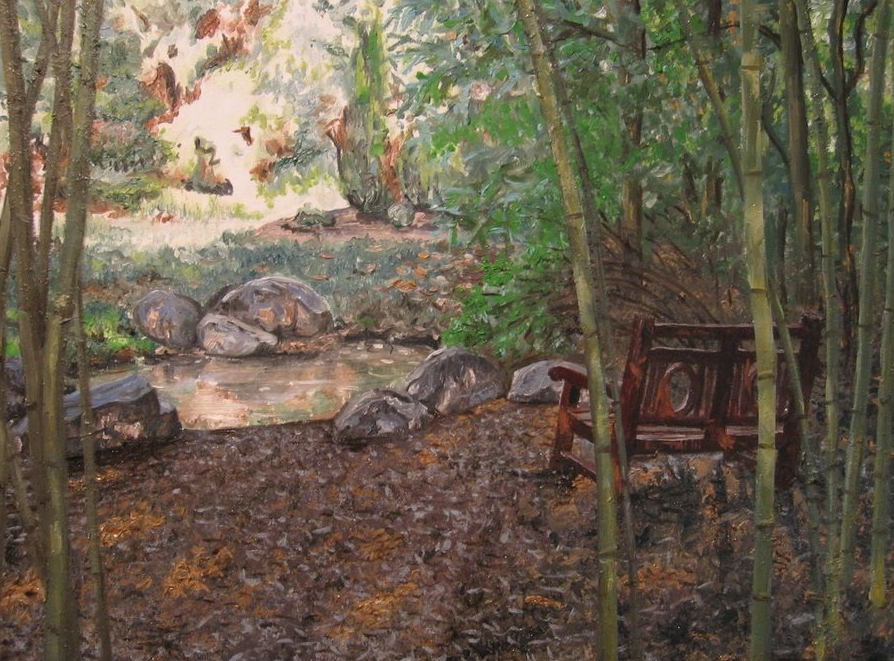Bamboo Sanctuary by Jessica Nute. Intima.
I was born and raised in a Catholic family. This revealed itself in the landscape of my childhood in subtle ways: stray rosaries in the the silverware drawer, conversations in which saints were talked about like old neighbors (“Have you seen the rake?” “Hmm, have you talked to St. Anthony lately?”), and the occasional mass in my family’s living room, presided over by my Jesuit uncle. As a fledgling Catholic, I was also exposed to a lot of talk about dignity. However, by the time I was too old to go to Sunday school anymore, all I felt I really knew about dignity was that it was what priests, martyrs, and sometimes also my history teacher wore on their faces to show respect. I thought dignity was more of a spiritual accessory than it was an aspect of human nature. In the past few years, as I have become more interested both in Catholic Social Teaching as well as the medical humanities, I have thought a lot about dignity in the light of human creativity. What is it about creativity, I have often wondered, that affirms our sense of personhood? Especially in the field of medicine, what is it about art that can mediate the indignity of illness?
My poem, "Hands," tries to grapple with part of the latter question: what makes clinical work creative? Growing up I never thought of my mother as a very artistic person. Though she had an obvious appreciation for beauty, she always seemed to be more chemist than craftsperson. It wasn't until I interned at my mother’s free clinic the summer after my junior year in high school that I had a chance to observe her “praise/ life for the little and big opportunities she is given/ to be creative with her hands.” To my mother, working with people—specially working with them on their health—is a fundamentally creative pursuit. She approaches her patients in the spirit of José Ortega y Gasset: “yo soy yo y mis circunstancia” (I am I and my circumstances). Each of her patients is full of story: each with his or her own dynamic plot and surprising character analysis. And with that in mind, my mother is always asking herself: what kind of prescription is really needed here? Insulin or inspiration? Statins or financial stability?
This morning when browsing the Intima, I came across “Mi Jardin / My Garden” by Emma Rivera in the Fall 2011 issue. The poem is seeping in tenderness for the simple pleasures of daily life: flowers, seeds, and color all take on magnificent proportions through Rivera’s careful, concise lines. The note at the end of the poem is as follows: “Written by Emma Rivera who continues to live on in the hearts and minds of those who knew her.” Poetry, it seems, served as a kind of therapy for Rivera when she was sick, yet as we read the footnote we are reminded how necessary art is to all of us for coping with loss. Whether you think a person can die with dignity or that death is in and of itself an indignity, art offers us a chance to hold on to things long enough to understand them better. Whether we are patient or doctor, healer or healed, art offers us grace through the changes in our lives, so that we, like Rivera can,“pass the hours/In [our] garden/ [I] lose all notion of time/ Observing the flowers.”
Claire Constance is a Global Public Health student at the University of Virginia who is interested in medical anthropology and story-telling. Her poem, "Hands" appeared in the Fall 2014 Intima.
©2015 Intima: A Journal of Narrative Medicine

